Vietnam is a land of breathtaking contrasts – where thousand-year-old traditions meet cutting-edge innovation, and where resilience has shaped one of the most remarkable national transformations in modern history.
From the legendary origins of the Vietnamese people to the defining moment at Ba Dinh Square in 1945, and the economic miracle of the Đổi Mới reforms, this is the inspiring story of a nation that has risen like a dragon.
In this feature, we’ll take you on a journey through Vietnam’s most iconic landscapes, cultural treasures, and pivotal historical events – and explore how this Southeast Asian gem is shaping its future as a global player.
An Introduction to the Unseen Vietnam
Forget what you think you know about Vietnam. Forget the black-and-white images of a distant war, or the serene, silent postcards of rice paddies. The first, most honest introduction to the Vietnam of today is not found in a museum or a history book. It is found here. In this river of steel and humanity. This is the symphony of the streets.
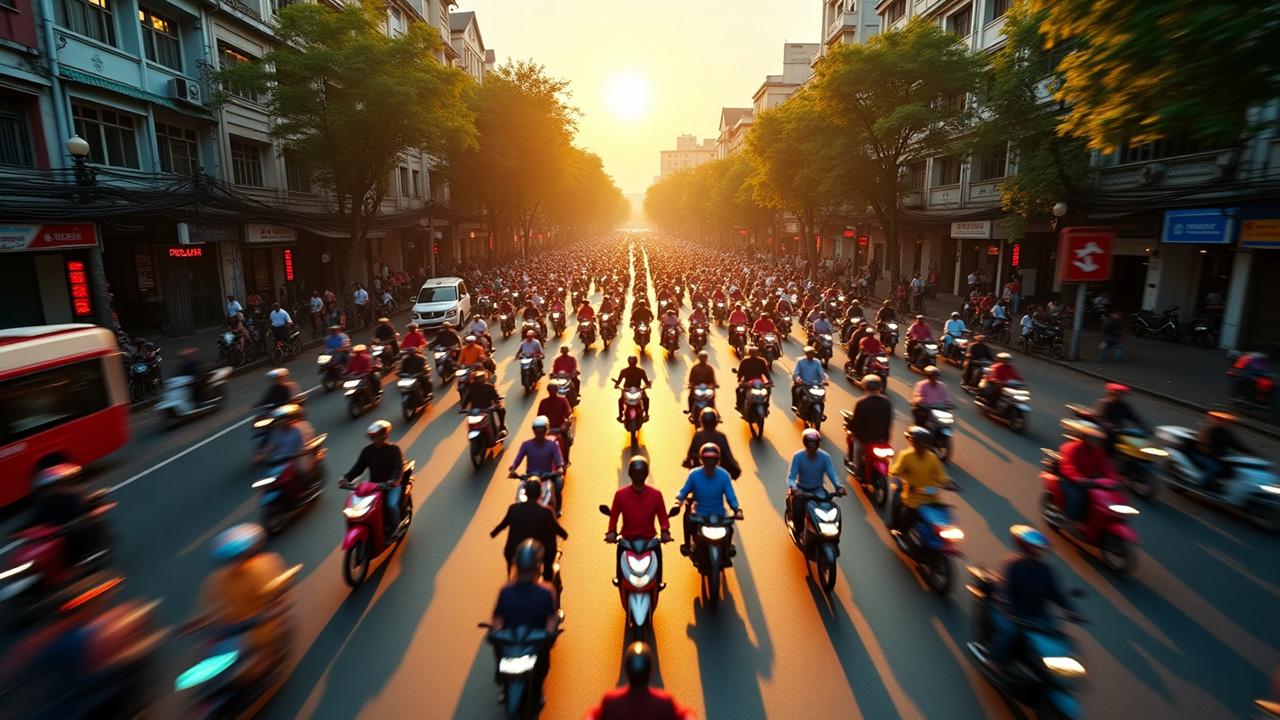
To the uninitiated eye, it is chaos. A maelstrom of motorbikes, a dizzying dance with no apparent rules. But look closer. Listen deeper. This is not chaos. This is a ballet. A highly complex, functional, and breathtakingly beautiful urban ballet, performed daily by millions. There are over 77 million registered motorbikes in Vietnam, a nation of just over 100 million people. In Ho Chi Minh City alone, 7.4 million bikes navigate the streets for its 8.4 million citizens, while Hanoi adds another 5 million to the count. This is a nation on two wheels, a nation on the move.
This overwhelming preference for the motorbike is not merely a matter of convenience; it is a story of economics and aspiration. Cars remain a luxury for the wealthy, their cost inflated by taxes that can reach 200 percent. But the motorbike… the motorbike is the steel horse of a nation’s economic renaissance. It is the tangible symbol of the individual economic empowerment that has defined Vietnam for the past three decades.
Following the landmark Đổi Mới or “Renovation” reforms that began in 1986, which opened Vietnam’s markets to the world, the motorbike became the affordable key to a new life. It was the vehicle that could take you to a new job in a burgeoning factory, the mobile storefront for a family’s small business, the vessel of freedom to explore the “never-sleeping cities” that hum with commerce at all hours. This sea of headlights is a direct, visual manifestation of a people seizing their economic destiny.

And within this river, a profound metaphor for Vietnamese society reveals itself. There are few traffic lights and even fewer stop signs in the older quarters. The flow is governed by an unwritten language of eye contact, subtle shifts in weight, and a shared, intuitive understanding of the collective goal: to keep moving forward, together. It is a system built on an implicit trust, a harmony of individual agency and collective cooperation. This balance mirrors a core cultural value system that emphasizes allegiance to family and a deep respect for others.
The individual pursuit of a destination is always nested within the shared responsibility for the group’s safe passage. In a way, this traffic is a microcosm of the nation’s unique political and economic model: a “socialist-oriented market economy,” where individual enterprise flourishes within a framework of collective order. This is the first lesson Vietnam teaches you: from seeming chaos emerges a remarkable, resilient harmony.
A Land of Legends and Landscapes
To understand the heart of this nation, you must journey from its bustling streets to its ancient soul, a soul etched into one of the most breathtaking landscapes on Earth. Vietnam’s story is not just one of people, but of the land itself—a land of legends, of dragons and turtles, of mountains that touch the sky and a coastline that stretches for over 2,000 miles.
This is Ha Long Bay, a UNESCO World Heritage Site and a scene of mythic proportions. The name translates to “Descending Dragon.” Legend tells that when the nation was young and under threat from invaders, the gods sent a family of dragons from the heavens to protect it. These dragons spat out jewels and jade, which formed the thousands of towering limestone islands and islets that dot the emerald waters, creating an impenetrable fortress. The dragons’ teeth, as they are known, stand today as silent, majestic sentinels.
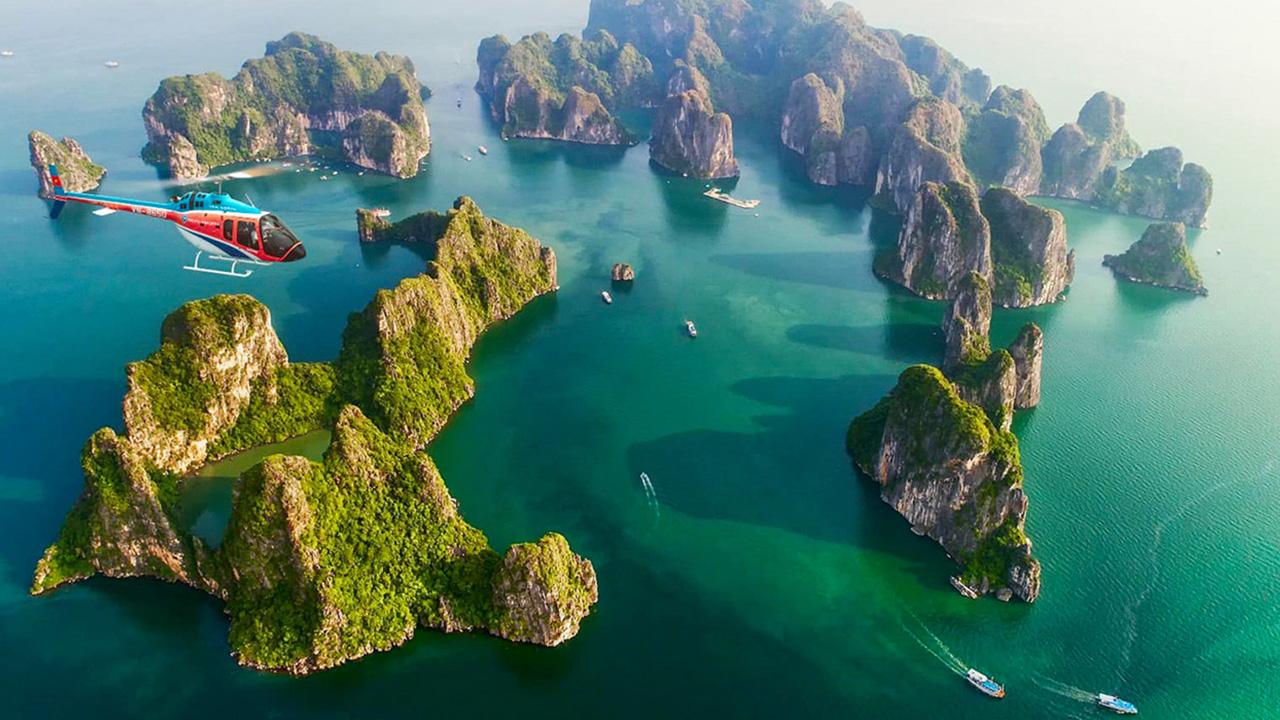
Further south, time seems to slow down in the ancient town of Hoi An. A perfectly preserved 15th-century trading port, its narrow streets and mustard-yellow shophouses whisper tales of a bygone era. Once a key stop on the spice trade routes, Hoi An was a melting pot of cultures. Chinese, Japanese, and European merchants settled here, and their influences are fused into the very fabric of the town, from the iconic Japanese Covered Bridge to the ornate ancestral homes. Hoi An is a living museum, a testament to Vietnam’s long history as a crossroads of international commerce and culture.
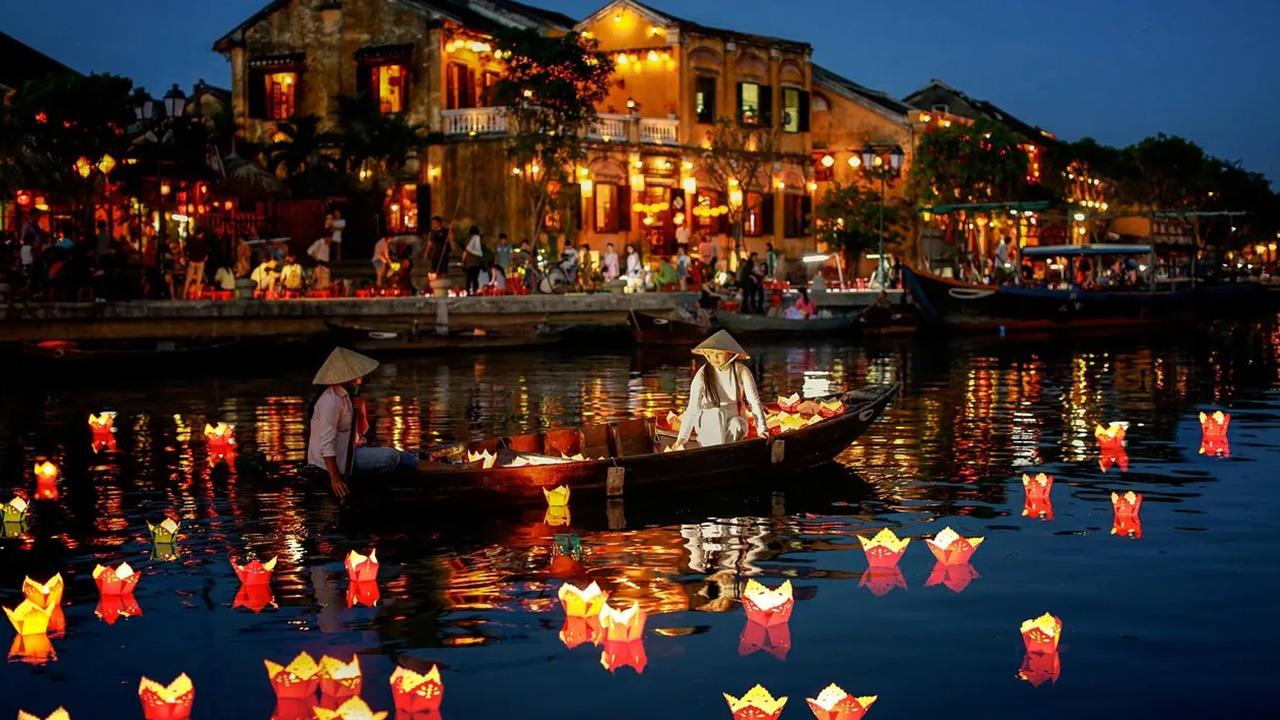
Journeying to the center of the country, we find Hue, the last imperial capital. Here, along the banks of the Perfume River, the Nguyen Dynasty ruled until 1945. The Complex of Hue Monuments, another UNESCO World Heritage site, is a masterpiece of cosmological alignment. Inspired by Beijing’s Forbidden City but with a uniquely Vietnamese character, the citadel, palaces, and royal tombs were laid out in harmony with the five cardinal points, the five elements, and the five colors. It is a place of profound symmetry and symbolism, representing a history of powerful, centralized, and independent imperial rule.
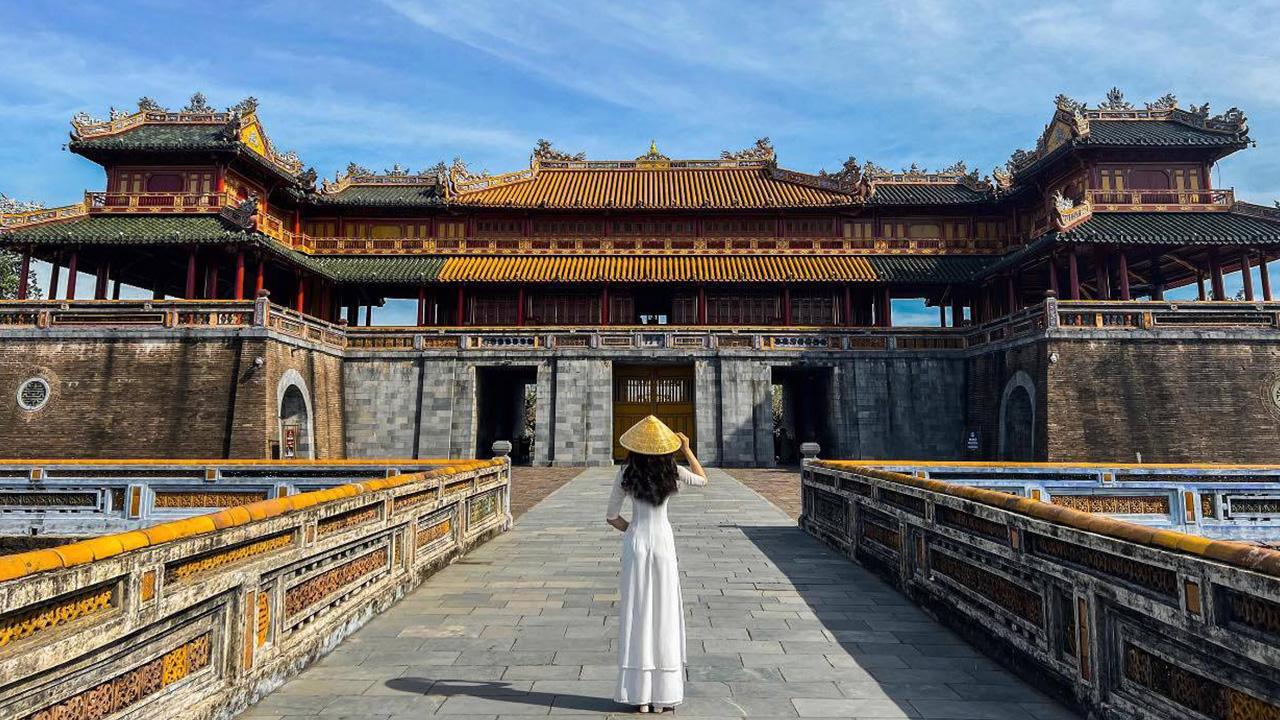
The geography of these treasured sites tells the story of Vietnam’s identity. It is a nation forged through the interplay of distinct forces: internal imperial power, visible in the citadels of Hue and Thang Long in Hanoi; vibrant external cultural exchange, preserved in the ports of Hoi An and the ancient Hindu temples of the My Son Sanctuary, which show a deep connection to the Indian subcontinent from as early as the 4th century; and a mythical, inseparable relationship with its unique landscape, embodied by Ha Long Bay and the stunning Trang An Complex.
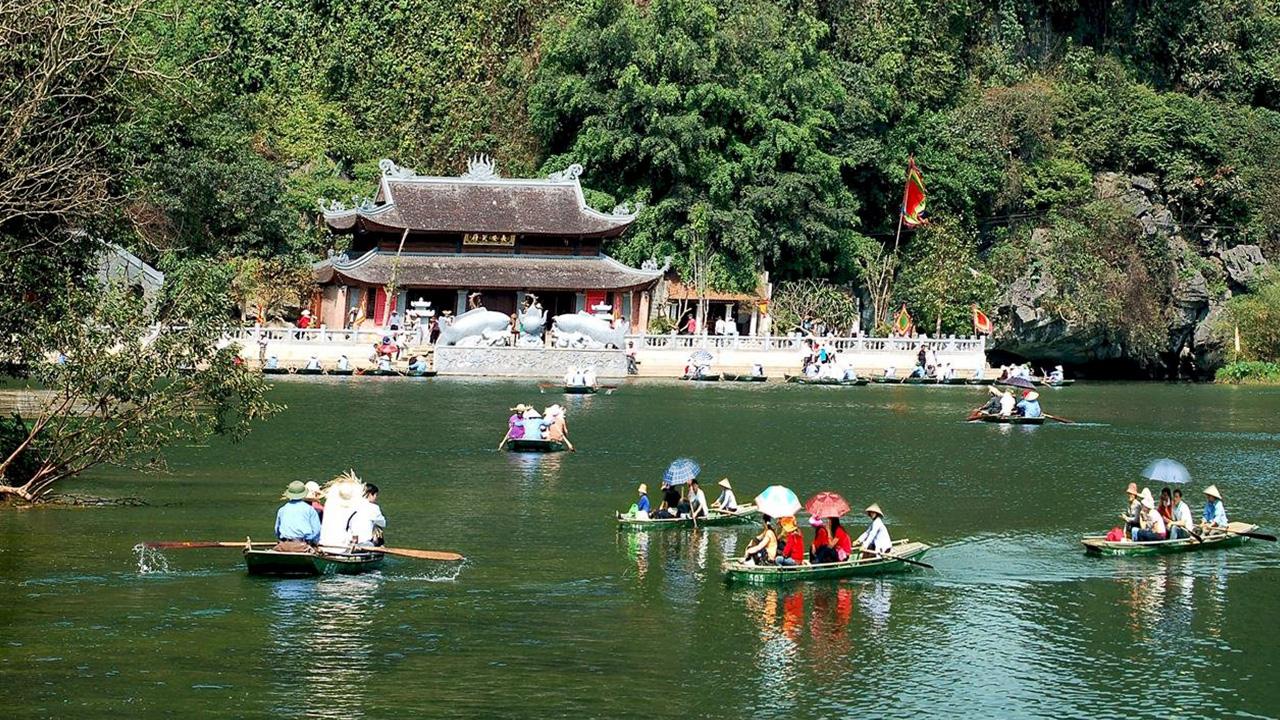
The conscious effort to preserve and gain international recognition for these sites, which began in earnest in the 1990s, is a critical part of modern Vietnam’s story. It was a deliberate act of nation-building. As the country opened its economy to the world after decades of war and isolation, it simultaneously sought to define its cultural identity on the world stage. The message was clear, aimed as much at its own people as the outside world: “We are not defined by war. We are an ancient, sophisticated civilization. Our deep history is the bedrock of our modern strength.”

This assertion of cultural pride is the same spirit that animates the grand celebrations of its National Day. Woven through this landscape are the nation’s spiritual guardians. The dragon is the ancestor of the Vietnamese people, a bringer of life-giving rain for the agricultural lands. The turtle, a symbol of intelligence, strength, and longevity, is associated with legendary victories and the enduring fight for independence. And rising from the muddy waters to bloom in immaculate beauty is the lotus, Vietnam’s national flower, a perfect symbol of the nation’s purity, grace, and resilience in the face of adversity.
The Five-Element Feast: A Philosophy on a Plate
To truly connect with a culture, you must taste it. And in Vietnam, food is more than mere sustenance. It is a philosophy on a plate. It is the art of balance, a reflection of the national character itself.
Vietnamese cuisine is built upon a sophisticated philosophy of five elements, a quest for the perfect harmony of flavors in every dish. Spicy, representing metal; sour, representing wood; bitter, for fire; salty, for water; and sweet, for the Earth. This delicate balance is why Vietnamese food has captivated palates across the globe. Two dishes, in particular, have become global ambassadors, so iconic they are now officially part of the English language: “Pho” and “Banh Mi”.
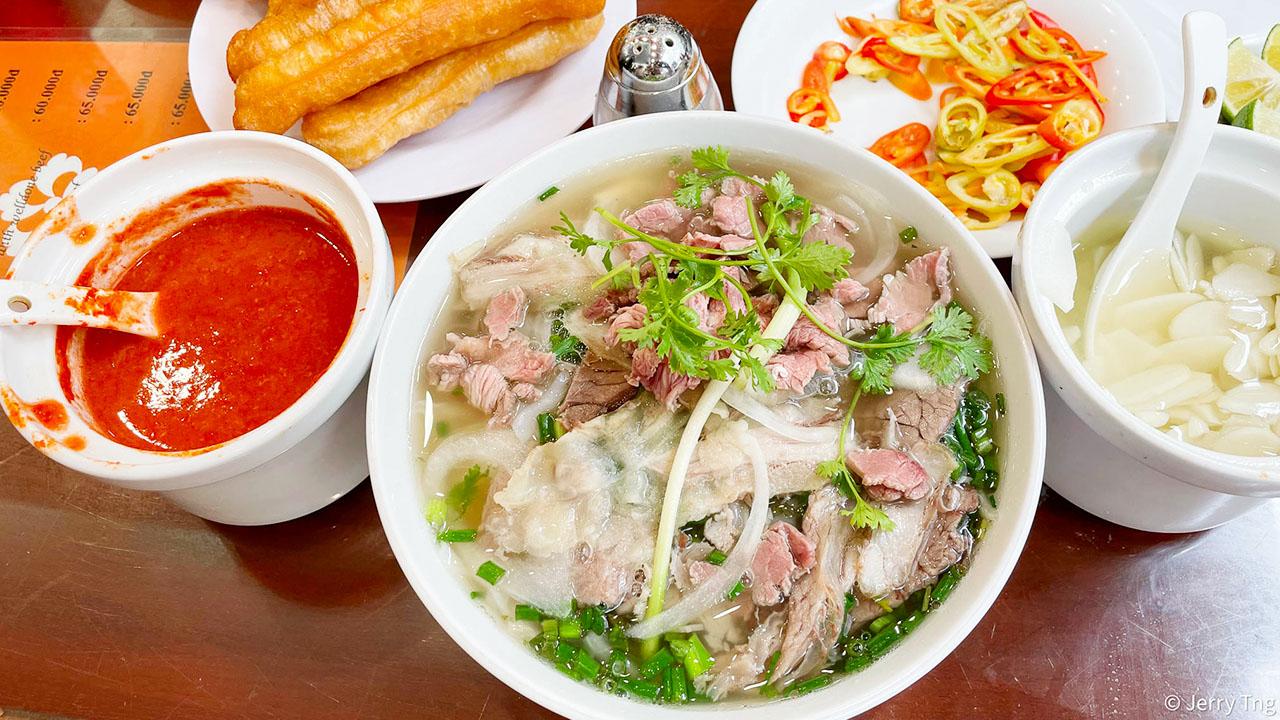
Pho, the national dish, is a universe in a bowl. A deceptively complex broth, simmered for hours with spices, poured over soft rice noodles and tender meat, and brought to life with a constellation of fresh herbs. Banh Mi is the perfect street food sandwich, a legacy of the French colonial period transformed into something uniquely Vietnamese: a crusty baguette filled with a symphony of textures and tastes—savory meats, crisp pickled vegetables, fresh cilantro, and rich pâté.
These dishes are born from the streets, and it is on the streets where the culinary heart of Vietnam beats strongest. The sidewalks of cities like Hanoi and Ho Chi Minh City are a veritable “temple of street food”. Here, life unfolds on tiny plastic stools. Around bubbling pots and sizzling woks, friends gather, families eat, and deals are made. This is not a performance for tourists; it is a fundamental, communal ritual of daily life, an affordable and delicious expression of community.
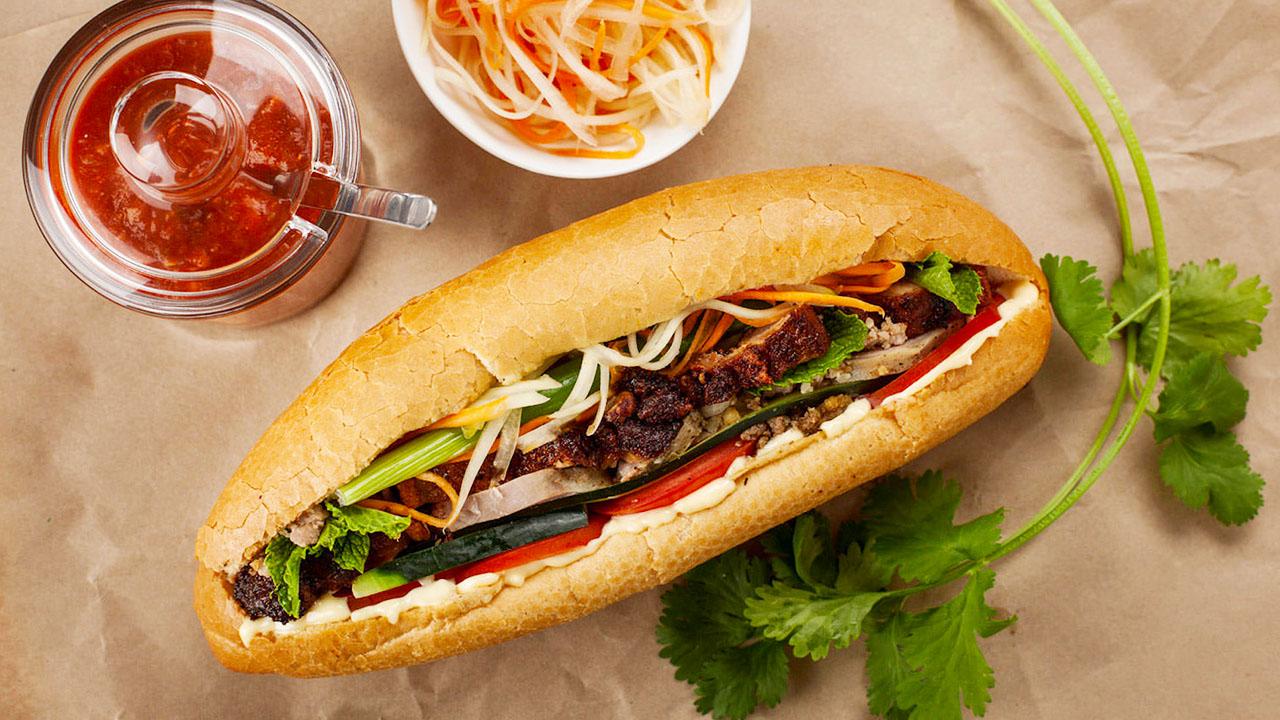
The nation’s agricultural prowess extends beyond the dinner plate. Vietnam is a global powerhouse in exports, the world’s largest producer of black pepper and cashew nuts, and, astonishingly, the second-largest exporter of coffee, trailing only Brazil. This has cultivated a deep and inventive domestic coffee culture.
In Hanoi, you can find the legendary egg coffee, or cà phê trứng. Born of necessity in the 1940s when fresh milk was scarce, it’s a rich, creamy concoction of whipped egg yolk, sugar, and strong Robusta coffee that tastes more like a tiramisu than a beverage. For the more adventurous, there is even snake wine, or rượu rắn, a potent rice wine steeped with a whole venomous snake, believed in traditional culture to bestow health and virility.
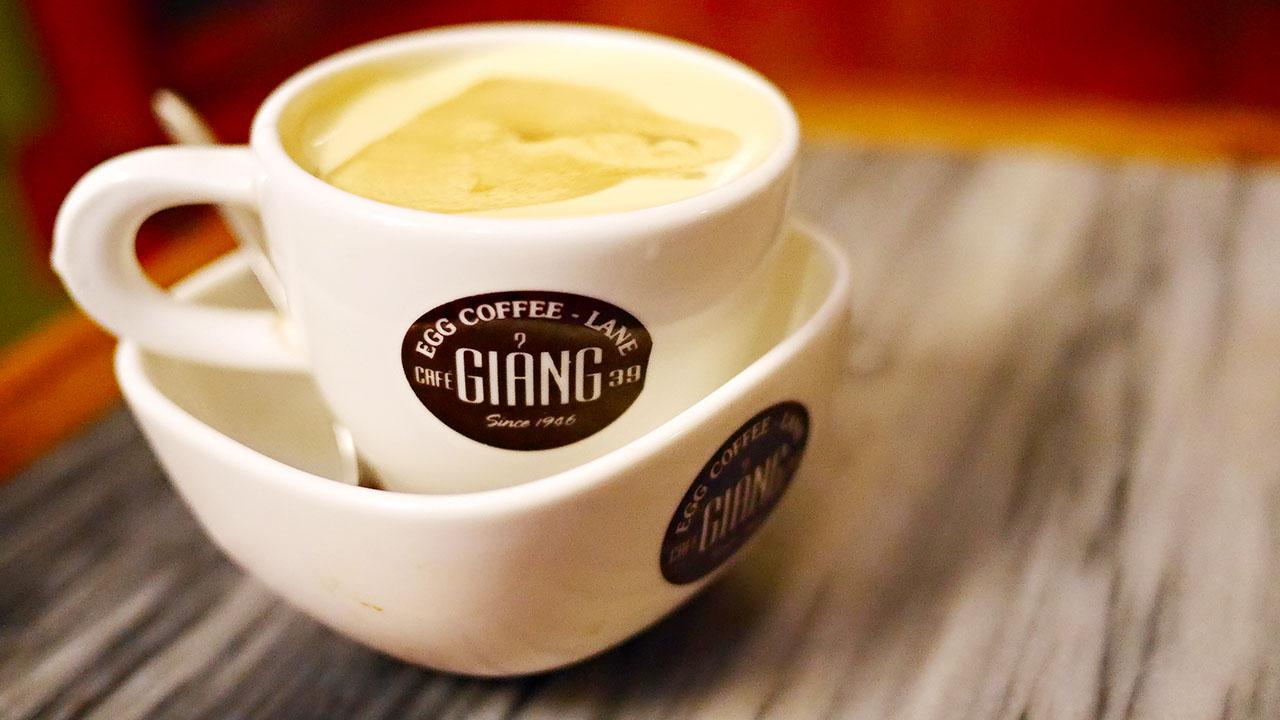
The global success of Vietnamese food is perhaps the most effective form of the nation’s modern “soft power.” For decades, the country’s international image was shaped by conflict. Today, for millions around the world, the primary association with “Vietnam” is the comforting aroma of a bowl of Pho or the satisfying crunch of a Banh Mi. Every bite sold in a foreign land is a small act of cultural diplomacy, reshaping perceptions and building bridges.
And just as the chef balances the five elements in a dish, this reveals a deeper truth. The Vietnamese worldview is one of pragmatic harmony, of blending seemingly contradictory elements—ancient and modern, communist and capitalist, individual and collective—to create a stable, resilient, and flavorful whole. The philosophy on the plate is the philosophy of the people.
The Day of Days: The Heartbeat of a Nation
A Date with Destiny: Ba Dinh Square, 1945
Every nation has a birthday. A single day that marks the moment it drew its first breath as a sovereign state. For Vietnam, that day is September 2nd. To understand the immense pride and emotion that swells across the country on this day, we must travel back in time, to this very spot: Ba Dinh Square, Hanoi, 1945.
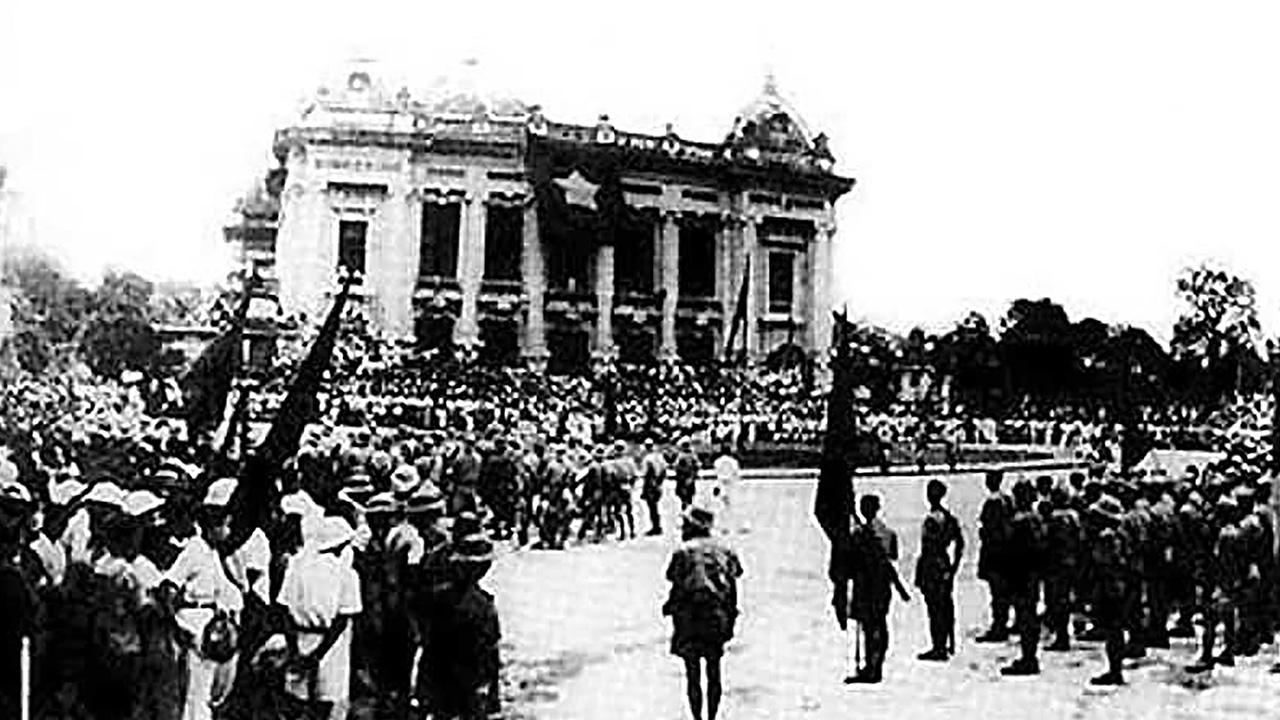
The air on that day was thick with history. Just weeks before, the August Revolution had swept across the country, a popular uprising that ended centuries of feudalism and nearly a century of French colonial rule. Now, on September 2nd, tens of thousands of people—workers, peasants, intellectuals, soldiers—streamed into the square. Their faces, captured in the fading photographs of the era, show a mixture of hope, defiance, and the dawning realization of a dream long thought impossible.
They carried hand-painted banners, their slogans written in Vietnamese, English, French, Chinese, and Russian, a clear message to the entire world. They read: “Nước Việt Nam của người Việt Nam”—”Vietnam for the Vietnamese.” And, more starkly: “Độc lập hay là chết”—”Independence or Death”.
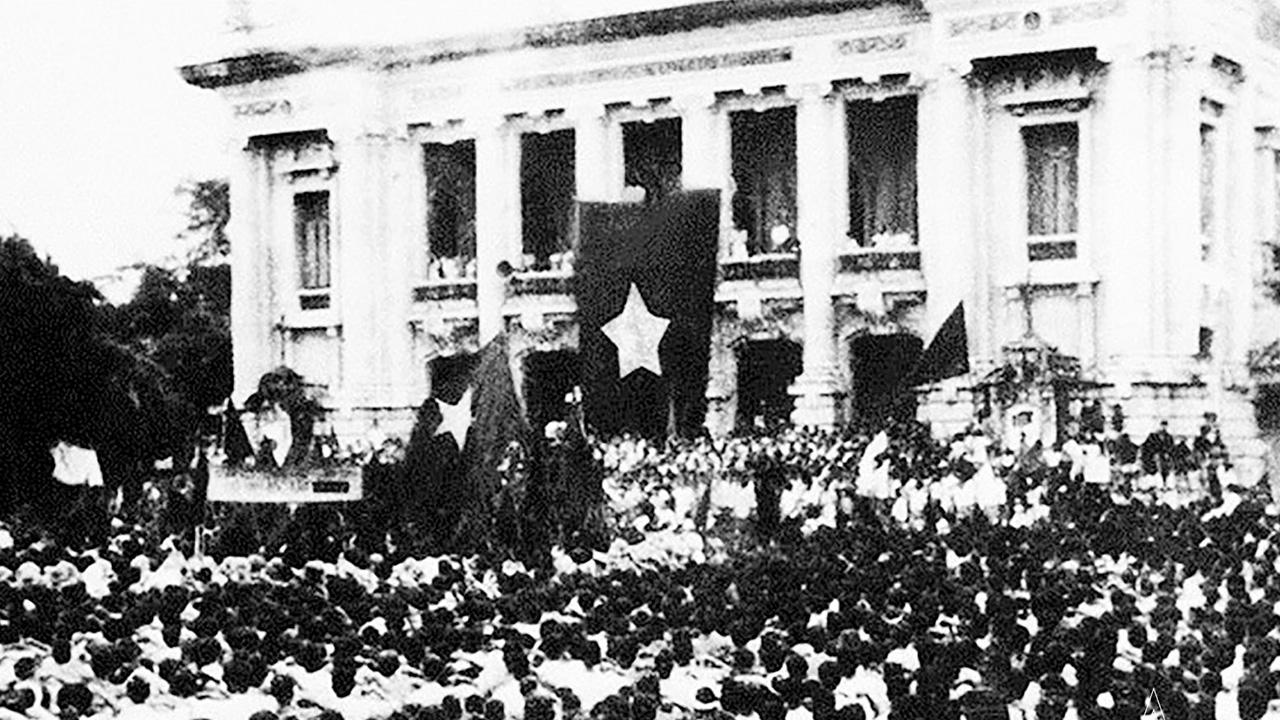
At exactly 2 PM, a man of slight build, dressed in a simple khaki suit, stepped up to the podium. He was Ho Chi Minh. On behalf of the provisional government, he began to read the document he had drafted: the Tuyen Ngon Doc Lap, the Declaration of Independence. He began not with a proclamation of victory, but with a simple, human question to the massive crowd: “Countrymen, can you hear me clearly?” It was a gesture that instantly connected the leader to his people, establishing a bond that endures to this day.
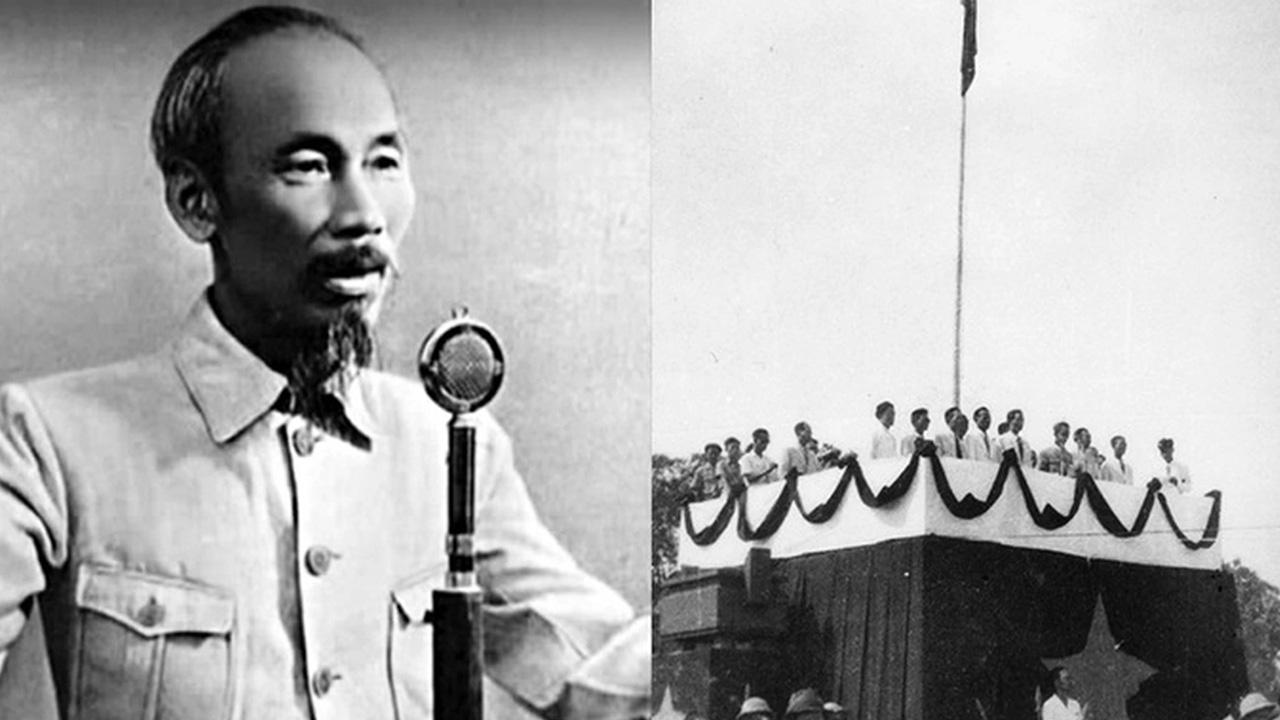
Then, he began to read words that would echo through history, words that were a masterstroke of political and moral strategy. He quoted directly from another, older declaration, born from another anti-colonial struggle: “All men are created equal. They are endowed by their Creator with certain inalienable rights, among these are Life, Liberty and the pursuit of Happiness.”
The choice to use the immortal words of the American Declaration of Independence was a deliberate and brilliant act of political communication. On one level, it was an appeal to the universal values of human rights, extending that logic from the rights of individuals to the rights of an entire nation to self-determination.
On another, it was a direct challenge to the Allied powers, particularly the United States and France, who had just fought a world war in the name of freedom and democracy. Ho Chi Minh was using the West’s own most cherished ideals as a mirror, exposing the profound hypocrisy of its colonial endeavors. He was framing Vietnam’s struggle not as a radical, isolated uprising, but as the rightful fulfillment of a universal promise.
As he concluded the declaration, officially giving birth to the Democratic Republic of Vietnam, the first of its kind in Southeast Asia, a new era began. It was an era that would be fraught with decades more of war and hardship, but it was, for the first time, an era defined by the principles of independence and freedom, declared on that fateful day in Ba Dinh Square.
The Grand Parade: A Nation on the March
And so, every year on this day, the nation gathers again at Ba Dinh Square to honor that moment. But on a milestone anniversary like the 80th, the celebration transcends memory. It becomes a living, breathing spectacle of national identity. A grand parade. A nation on the march.
The day begins with profound solemnity. A 21-gun salute thunders from the Thang Long Royal Citadel, the ancient heart of the capital, forging an audible link between Vietnam’s thousand-year history of independence and its modern state. As the national anthem, “Tien Quan Ca”, swells, the nation’s flag—a yellow star on a red field—is slowly, reverently raised. High above, jets from the Vietnam Air Force streak across the sky, painting it with the national colors. This is a declaration of sovereignty, a powerful and unambiguous statement of national presence.
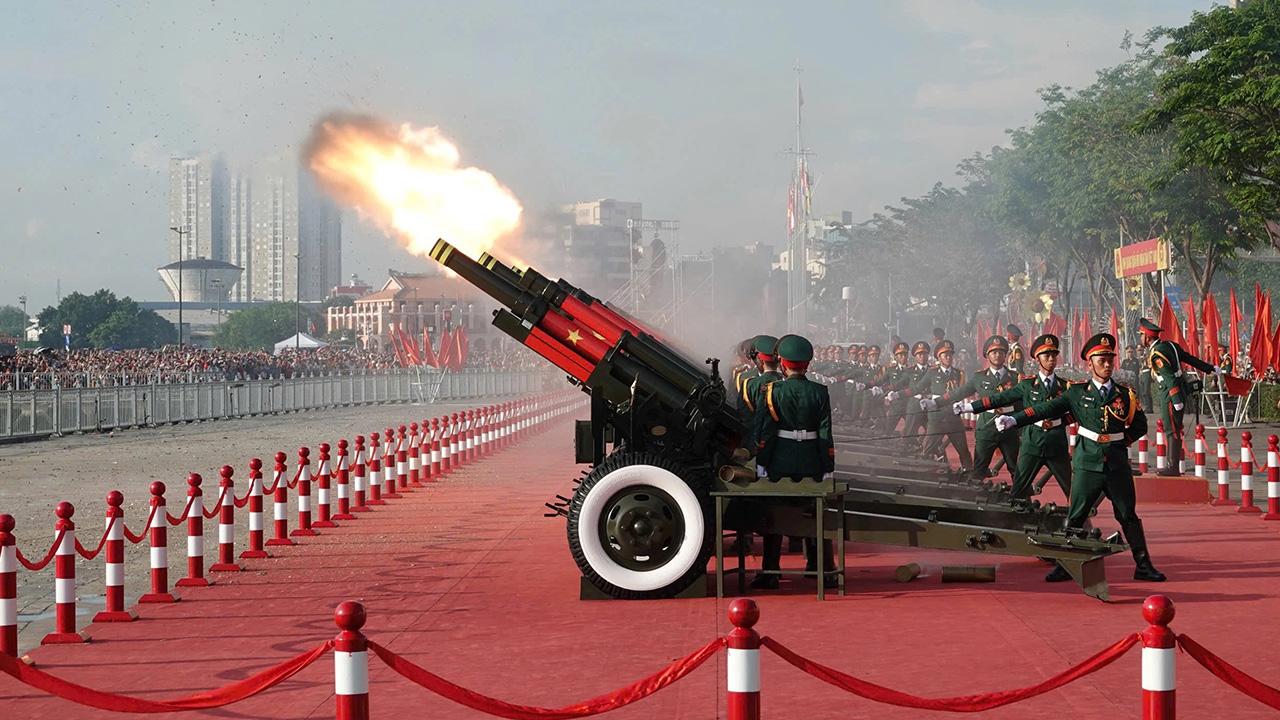
Then, the parade begins. It is a meticulously choreographed performance, a story told in marching feet and vibrant color, involving anywhere from 12,000 to 30,000 participants. Leading the way is the vanguard, which establishes the foundational pillars of the state. A vehicle carries the National Emblem of the Socialist Republic of Vietnam, followed by a massive portrait of the founding father, President Ho Chi Minh. Often, a float depicting a key moment of national triumph, like the victory at Dien Bien Phu, will follow, grounding the present celebration in a legacy of heroic resistance.
Next come the protectors. The military blocs march with crisp, intimidating precision. These are the elite forces of the People’s Army of Vietnam—the infantry, the navy, the air force, the border guards. For the first time, maritime forces like the Coast Guard and Naval Air Force are given special prominence, a reflection of the nation’s modern strategic priorities.
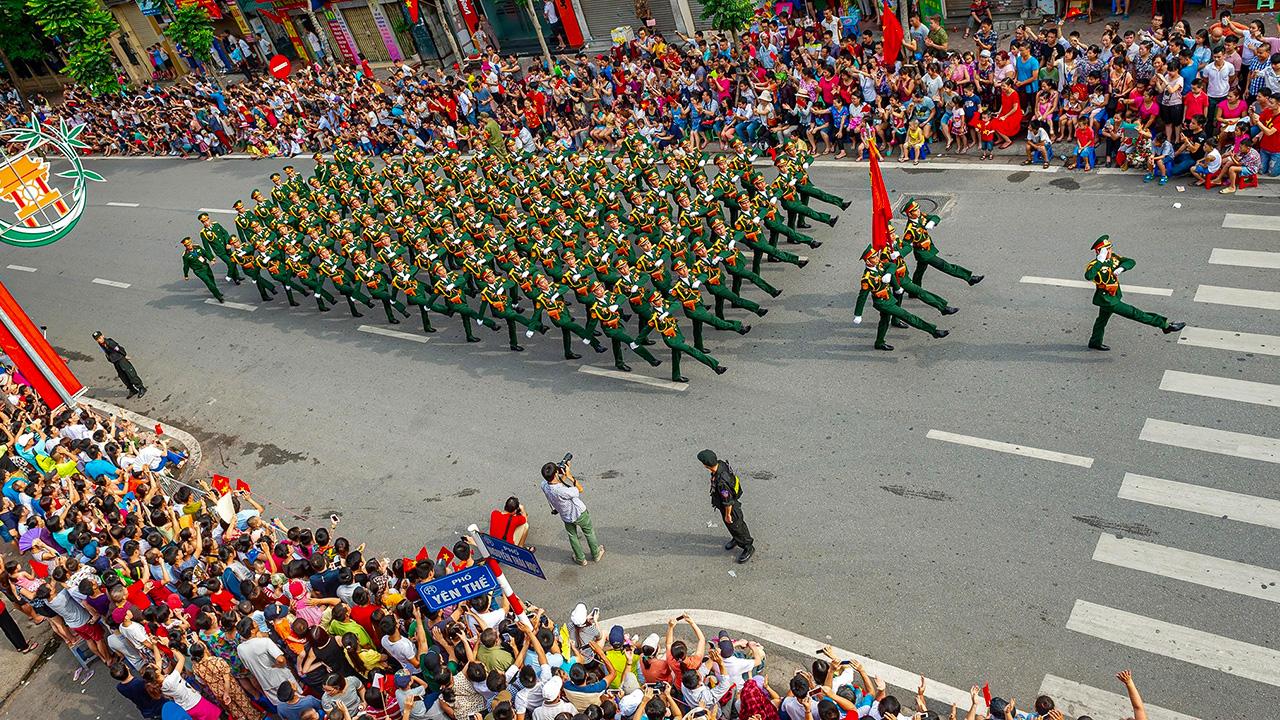
The sight is one of overwhelming strength and discipline, a projection of the state’s ability to safeguard its sovereignty and its people. But it is also a display of modern sophistication. We see the sharp uniforms of the female military music unit, the proud bearing of female peacekeepers destined for UN missions, and the striking presence of the cavalry mobile police, all projecting an image of a modern, integrated, and world-ready force.
But the military is only half the story. Following the “steel fist” comes the heart of the nation: the civilian blocs. This is the visual representation of the “Great National Unity Bloc,” the core principle that the nation’s strength lies in its people. Here march the revered war veterans, their chests heavy with medals, living links to the country’s past struggles. They are followed by blocs of workers in their uniforms, farmers with symbolic tools, and intellectuals, representing the pillars of the economy and society.
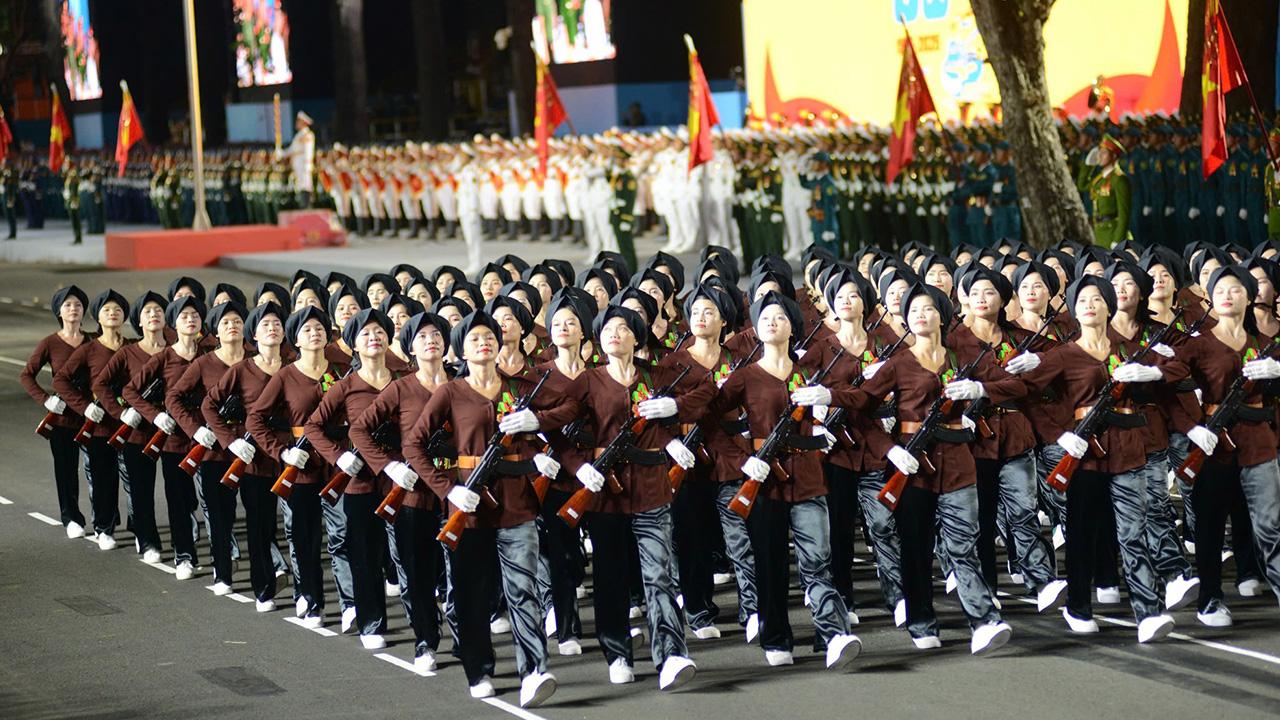
Then come the youth, the future of the nation, and finally, in a stunning explosion of color and culture, a procession representing Vietnam’s 54 distinct ethnic groups, each in their unique traditional dress. This is a powerful affirmation of unity in diversity, a statement that every group, from the Kinh majority to the smallest mountain tribe, is an integral part of the Vietnamese family.
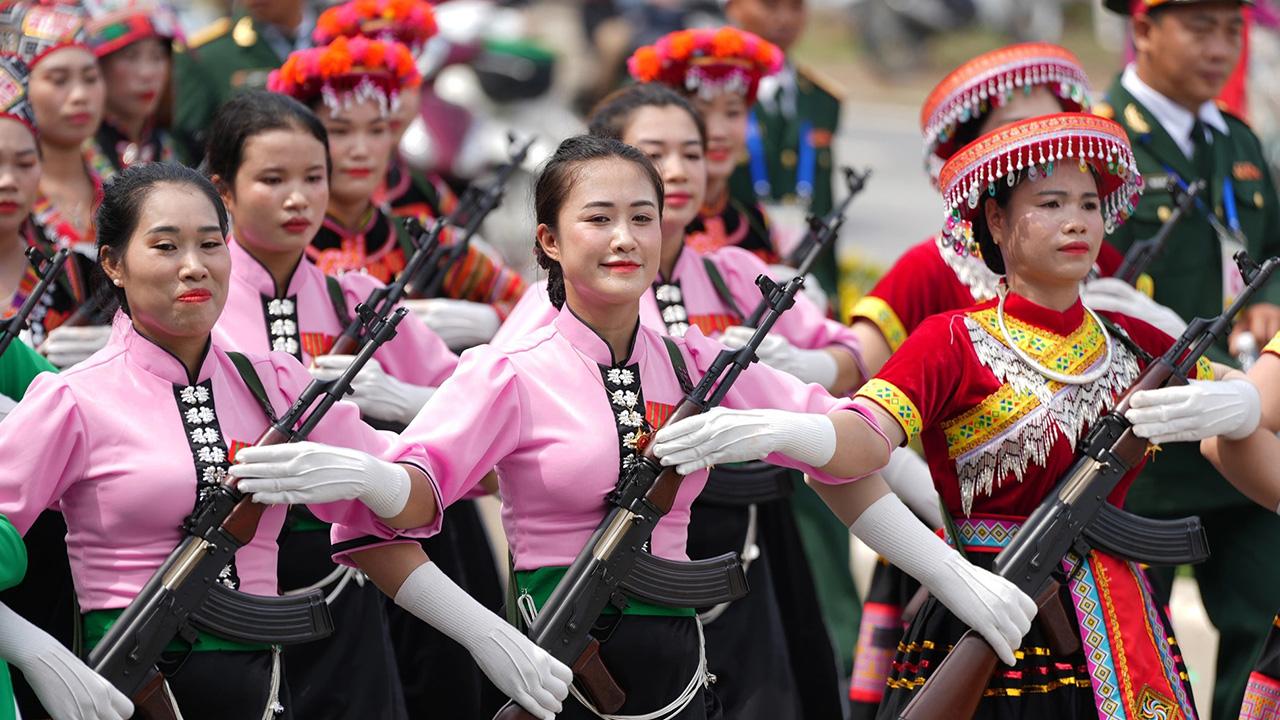
Yet, what truly defines this event is not the choreographed perfection, but the atmosphere that surrounds it. The streets are lined with cheering crowds, waving flags with an infectious, heartfelt pride. During the long, hot weeks of rehearsal, citizens spontaneously offer water, fans, and snacks to the marching soldiers. This is not the detached respect one might show to a distant state apparatus. It is a warm, familial bond. This reveals a fundamental truth: the concept of a “People’s Army” is not mere propaganda in Vietnam; it is a lived reality.

Born from a history where the army was composed of the sons and daughters of farmers and workers fighting for a common cause, it remains deeply integrated into society, assisting with everything from disaster relief to rural development in peacetime. The parade, therefore, is more than a display of state power. It is a national family reunion, and the powerful emotional current that flows between the marchers and the crowd is the key to understanding the deep social cohesion that binds this nation together.
The Dragon Ascendant: A Nation Reborn
The Đổi Mới Miracle and the New Vietnam
The pride on display at the parade is not rooted solely in the past. It is fueled by the extraordinary accomplishments of the present. The spirit of 1945, the unity and resilience celebrated in the streets of Hanoi, laid the foundation for one of the most remarkable economic and social transformations in modern history. This is the story of the Dragon’s Ascent.

For a decade after the end of the war in 1975, Vietnam’s centrally planned economy struggled. Then, in 1986, the Communist Party of Vietnam made a pragmatic and momentous decision. It initiated a policy of Đổi Mới, or Renovation, fundamentally shifting the country towards a “socialist-oriented market economy”. It was a gamble that unleashed the latent entrepreneurial spirit of the Vietnamese people.
The results have been nothing short of miraculous. In a single generation, Vietnam transformed itself from one of the world’s poorest nations into a dynamic, lower middle-income country. Real GDP per capita, which was less than $700 in 1986, soared to nearly $4,500 by 2023. The poverty rate plummeted, lifting tens of millions of people into a new world of opportunity.
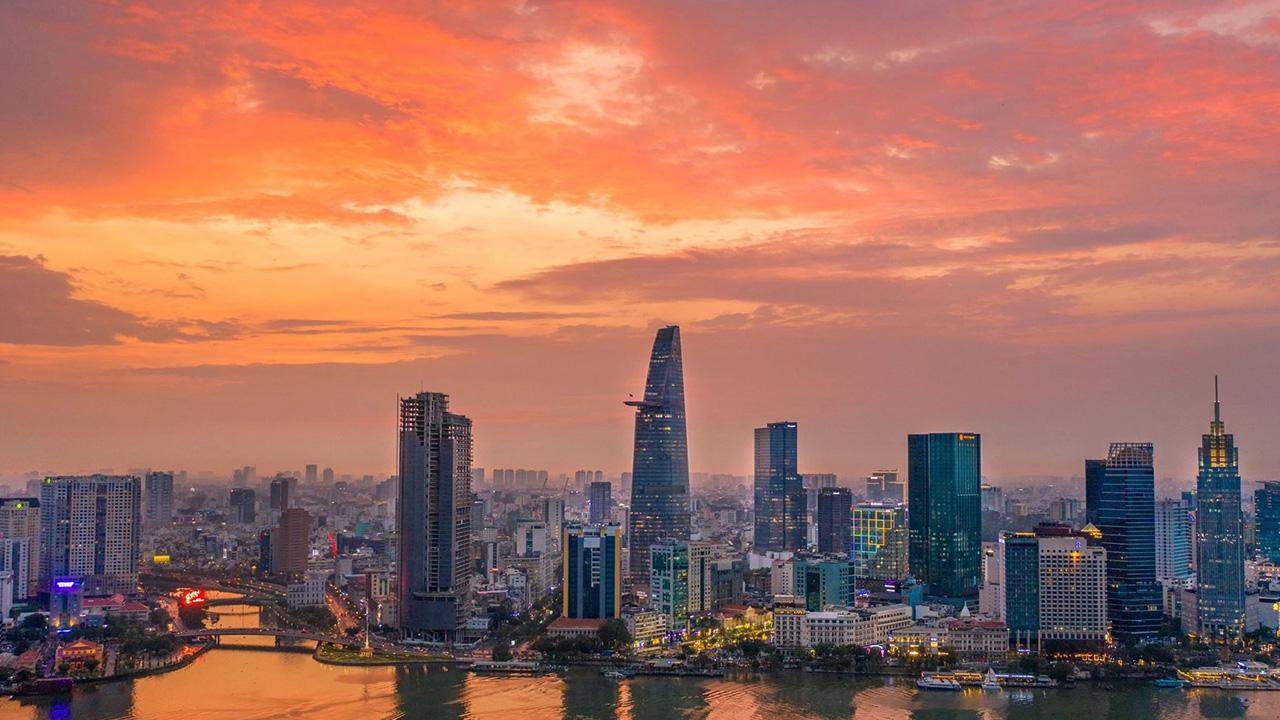
Today, Vietnam is a formidable player in the global economy. It is a manufacturing powerhouse, a critical link in the supply chain for the world’s electronics and textiles. Its fields and farms are some of the most productive on Earth, making it a leading exporter of coffee, rice, and cashews. This economic growth has, in turn, funded a revolution in human development. Access to electricity, a privilege for only 14 percent of the population in 1993, is now nearly universal. The country has achieved universal primary education, and its students consistently rank near the top in international assessments. Life expectancy has risen, and infant mortality has fallen dramatically.

The economic success of Đổi Mới is the modern-day validation of the struggle for independence. The promise of 1945 was not just for political freedom, but for a better life for the people. After years of hardship, the nation’s pragmatic pivot delivered on that promise in a tangible, life-altering way. The pride you see on the faces in the crowd at the parade is not just for historical victories; it is pride in the nation’s incredible resilience, its capacity for reinvention, and its proven ability to deliver prosperity for its people.
The parade celebrates the past, but the thriving, modern nation all around it is the triumph of the present. And Vietnam is not done. It has set ambitious goals for its future: to become a high-income, developed nation by 2045—the 100th anniversary of its independence—and to do so in a green and sustainable way, aiming for net-zero carbon emissions by 2050.
An Invitation to Discover
Vietnam is a land of fascinating, harmonious contrasts. It is ancient and hyper-modern. Fiercely independent and warmly welcoming. Deeply respectful of its history and racing impatiently towards its future.
The motorbike ballet, the five-element feast, the unified grandeur of the National Day parade—they are all different expressions of the same core identity. An identity forged in resilience, and a culture that finds its greatest strength not in uniformity, but in balance.
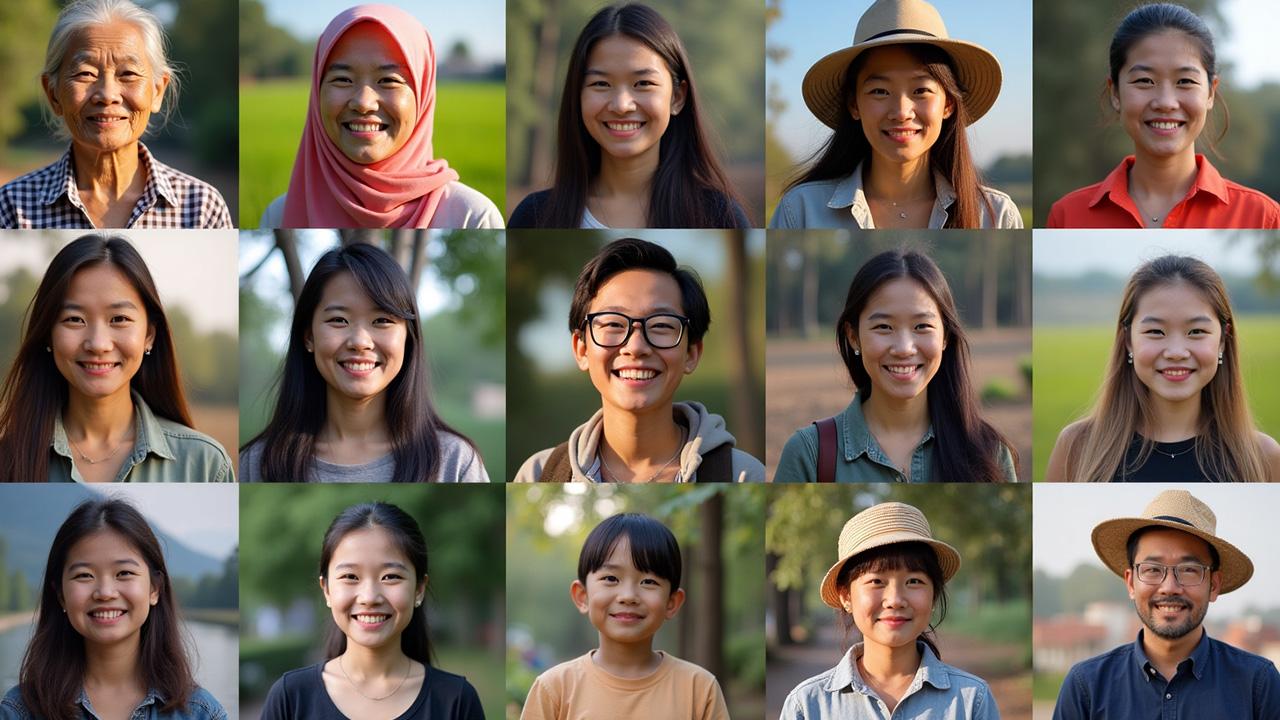
Vietnam’s story is still being written. The 80th anniversary of its birth is not an endpoint, but a milestone on a continuing journey. To truly understand this nation—its strength, its grace, its humor, its heart—you cannot simply watch from afar. You have to come and feel its rhythm. Taste its philosophy. And meet the people who, with every passing day, are building its future.
Come and write your own chapter in the story of the Dragon’s Ascent.
Conclusion
Vietnam’s story is far from over. As the nation moves toward its ambitious 2045 goal of becoming a high-income, sustainable economy, it continues to captivate the world with its spirit, beauty, and resilience. From the vibrant streets of Hanoi and Ho Chi Minh City to the tranquil rice terraces of Sapa and the golden beaches of Da Nang, every corner of Vietnam offers a new chapter in its ongoing journey.
Whether you are drawn by its rich history, diverse culture, or stunning natural landscapes, Vietnam invites you to experience its rhythm firsthand. Come and witness the harmony between tradition and modernity, and see for yourself why the Rising Dragon’s story is one that inspires the world.


